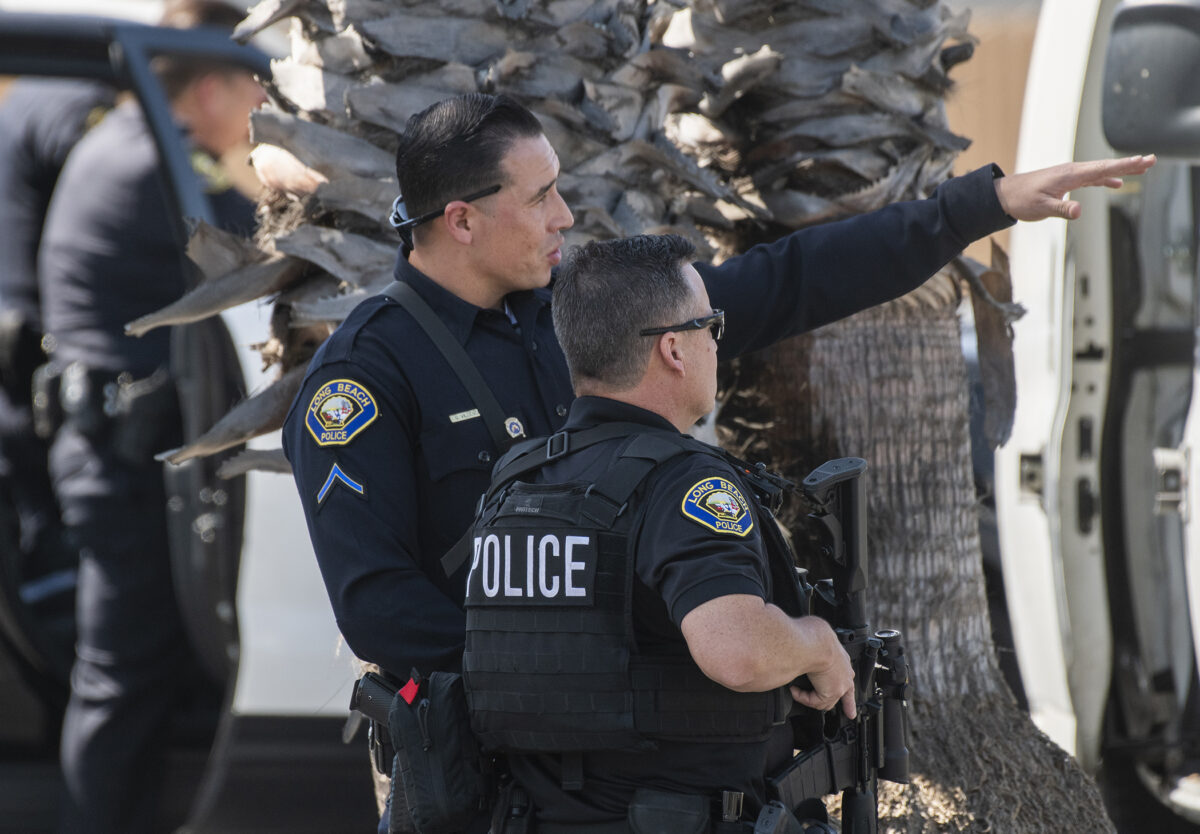Long Beach police officers have been forcibly detaining or arresting fewer people recently.
Between 2016 and 2018, the number of times officers used force steadily dropped from around 500 instances in 2016 to 383 in 2018, according to statistics from the department.
Even the most deadly uses of force—police shootings—have declined.
So far in 2019, Long Beach police have shot two people, a marked drop compared to the past half-decade when the department averaged seven officer-involved shootings per year. The number of people shot in 2018, four, was also below that average.
“To have these low-level uses of force and (officer-involved shootings), obviously it’s something that we celebrate,” LBPD Deputy Chief Alex Avila said. “But we always look to even improve upon that.”
Long Beach is not alone in its decline. Over the past three years, the most serious uses of force, tracked by the California Department of Justice, have gone down across the state.
Police and experts are hesitant to draw a direct connection, but the reductions coincide with falling crime rates and fewer arrests.
“The theory would be that if you have less arrests across the state, you potentially have less interactions, clearly, between police officers and citizens or suspects,” said Brandon Martin, a research associate at the Public Policy Institute of California, a nonprofit, nonpartisan research center.
Arrest rates across the state have been dropping since the 1990s, he said. Recently, California has also enacted justice-system reforms that decriminalize some lower-level offenses.
A shift in how officers are trained is also likely a factor, Martin said. In recent years, statewide legislators have emphasized the need for deescalation and mental-health intervention tactics.
For instance, in August, Gov. Gavin Newsom signed a law that tightened the standards around when police can legally kill someone. The change comes along with new state mandates requiring departments to release video footage of their shootings.
“There’s a recognition that there’s certainly more scrutiny then ever and accountability, quite frankly, from the courts, the legislators and from the community as a whole on these critical incidents and on these uses of force,” LBPD’s Avila said.
As a department, Long Beach has shifted its training to consistently infuse deescalation tactics designed to teach officers to slow down and keep their distance in potentially explosive situations.
“You’re not always going to be able to deescalate situations, but the expectation is that you attempt to when it’s possible, when there’s enough time,” said Avila, who oversees the department’s training.
Officers, he said, must start developing a plan of how they’re going to respond to a call—and, hopefully, peacefully resolve it—as soon as it comes over the radio.
The LBPD is also giving officers new tools in the hopes of avoiding lethal encounters. For instance, the department is rolling out a new pepper gel it hopes will be more effective and accurate than pepper spray, which could end up dousing an officer or bystander when used under less-than-ideal conditions.
Disparities remain
Even as the department is using less force, the amount of money it’s paying out in shooting and excessive-force lawsuits has grown.
In March, a jury awarded a record $9 million to the family of a mentally ill woman shot to death by Long Beach police in 2017. The overall cost of police litigation has surged in Long Beach since 2016, the same year uses of force started declining, according to a report in the Long Beach Business Journal.
Avila said LBPD officials debrief with the city’s attorneys after every verdict to try to glean what the jury thinks officers should have done differently.
And despite the overall decline in force, there’s still a disparity in who is on the receiving end of it.
Last year In Long Beach—a city whose population is about 12% black—29% of the most serious uses of force were against black residents or visitors, according to data from the California Department of Justice.
The state does not track all uses of force, only ones where officers fired a gun or the incident resulted in “serious bodily injury or death,” so it’s unclear if the racial disparity plays out in the LBPD’s broader number. The department did not have those statistics readily available.
Racial disparities also play out statewide in arrest and use-of-force stats, according to the PPIC and DOJ numbers.
Long Beach police said race does not play a factor in when officers use force.
“The actions of these individuals were what prompted the use of force,” LBPD spokeswoman Shaunna Dandoy said.

